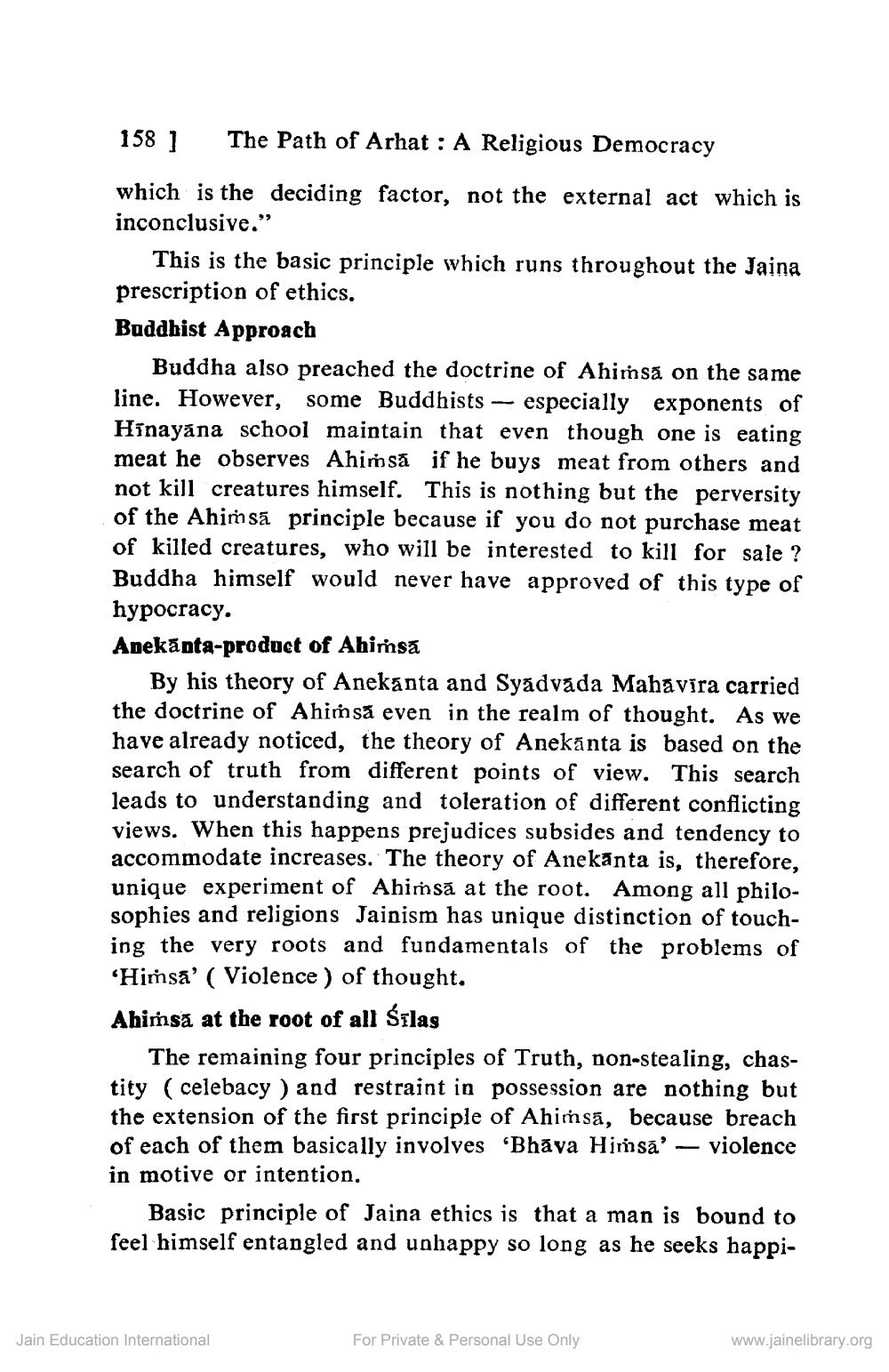________________
158 1
The Path of Arhat: A Religious Democracy
which is the deciding factor, not the external act which is inconclusive."
This is the basic principle which runs throughout the Jaina prescription of ethics.
Buddhist Approach
Buddha also preached the doctrine of Ahimsa on the same line. However, some Buddhists especially exponents of Hinayana school maintain that even though one is eating meat he observes Ahimsa if he buys meat from others and not kill creatures himself. This is nothing but the perversity of the Ahimsa principle because if you do not purchase meat of killed creatures, who will be interested to kill for sale? Buddha himself would never have approved of this type of hypocracy.
-
Anekanta-product of Ahimsa
By his theory of Anekanta and Syadvada Mahavira carried the doctrine of Ahimsa even in the realm of thought. As we have already noticed, the theory of Anekanta is based on the search of truth from different points of view. This search leads to understanding and toleration of different conflicting views. When this happens prejudices subsides and tendency to accommodate increases. The theory of Anekanta is, therefore, unique experiment of Ahimsa at the root. Among all philosophies and religions Jainism has unique distinction of touching the very roots and fundamentals of the problems of 'Himsa' (Violence) of thought.
Ahimsa at the root of all Śīlas
The remaining four principles of Truth, non-stealing, chastity (celebacy) and restraint in possession are nothing but the extension of the first principle of Ahimsa, because breach of each of them basically involves 'Bhāva Himsa' — violence in motive or intention.
Basic principle of Jaina ethics is that a man is bound to feel himself entangled and unhappy so long as he seeks happi
Jain Education International
For Private & Personal Use Only
www.jainelibrary.org




